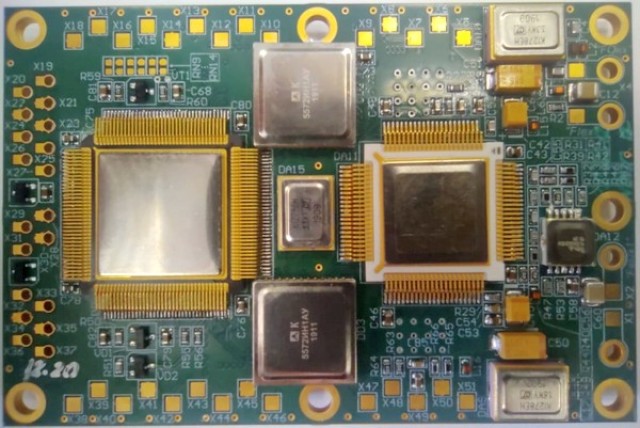Scientists of the MIPT Applied Nanotechnology Laboratory have developed and tested a new digital receiver board based mainly on Russian components. It will provide communications for small spacecraft. Boeing, Airbus and Thales have similar solutions, but the domestic version differs in that it implements the functions of the whole device in a single chip.
The Moscow Institute of Physics and Technology (MIPT) has announced the creation of a promising digital receiver board that allows small spacecraft (satellites) to communicate with the Earth.
The "heart" of the board is a single-crystal system developed by specialists of the Laboratory of Applied Nanotechnology.
The board was developed and tested by MIPT scientists with the financial support of the Ministry of Education and Science of Russia and in cooperation with the company "Russian Space Systems" (RKS). Based on the device, RKS plans to create a transceiver device for controlling satellites for various purposes.
According to Mikhail Ryzhakov, head of the Laboratory of Applied Nanotechnology at MIPT, the novelty will be distinguished by increased noise immunity and reliability, and will also provide higher accuracy in measuring the navigation parameters of spacecraft motion.
Device and features of the board
The satellite's equipment communicates with ground controls via a command and measurement system. In addition, the system is responsible for checking the onboard time scale and conducts radio monitoring of the orbit, MIPT explains.
The board carries a two-channel analog-to-digital and digital-to-analog converter (ADC/DAC), a clock signal distribution unit, a digital module, a permanent storage device and a set of interfaces. The components involved in the payment, as noted in the MIPT, are mainly of Russian origin, which is important in the context of sanctions and a national-scale import substitution campaign.
The board of the digital receiver of the transceiver of the command and measurement system, created by specialists of the Russian University, provides high accuracy of radiometric measurements, and also differs in lightness and compactness.
To achieve a modest size of the device, the developers tried to minimize the volume of analog components, entrusting the lion's share of the work to digital equipment.
Unlike foreign analogues – produced by American Boeing, European Airbus and Thales – in the case of domestic development, the standard instrument functions of space onboard equipment are implemented in the form of an electronic component base product. In other words, the functions of the whole device are "sewn" into one integrated circuit.
"The board is quite simple, but it has its own unique characteristics and provides two–way communication of spacecraft with the Earth: it receives a signal, processes it and transmits information in digital form further," says Mikhail Ryzhakov. "Another advantage of our development is that signal processing operations take place on a single chip, and not on several chips, as usual."
"Russian Space Systems" belongs to Roscosmos (through the "daughter" represented by the United Rocket and Space Corporation) and specializes in the development, production, testing and operation of onboard and ground-based equipment, information space systems for various purposes. In particular, the organization is engaged in the development of the global navigation satellite system (GLONASS) – the Russian equivalent of the American GPS.

